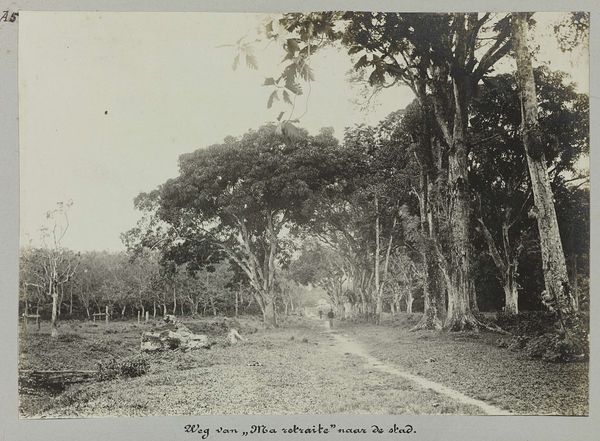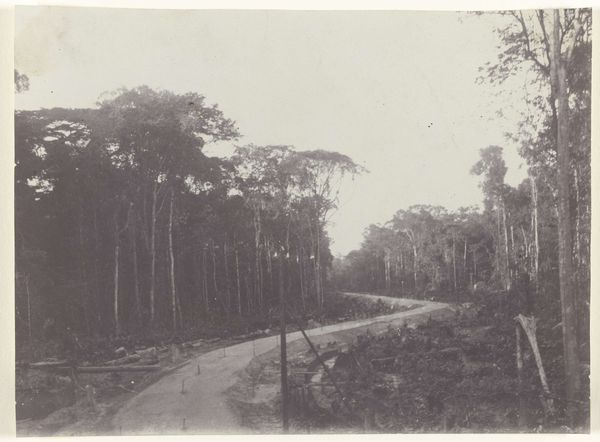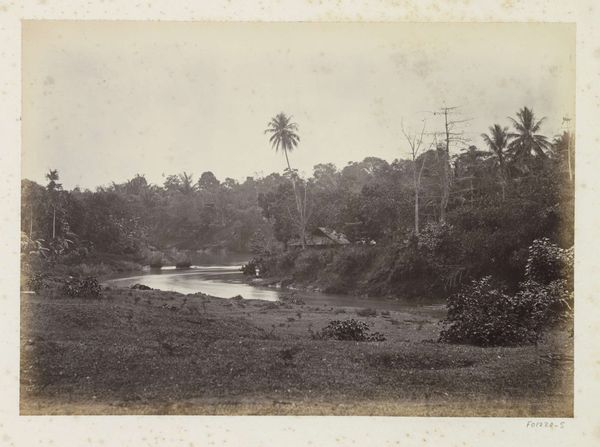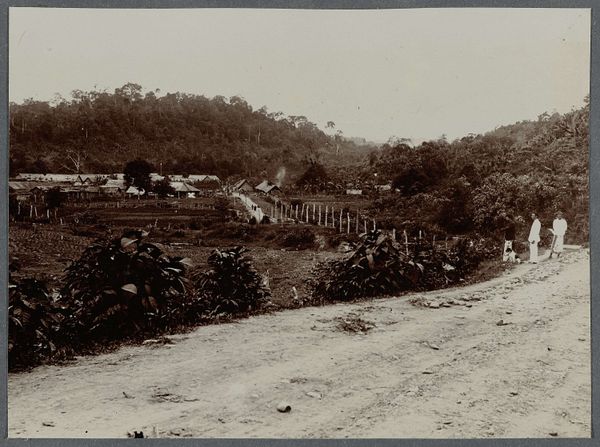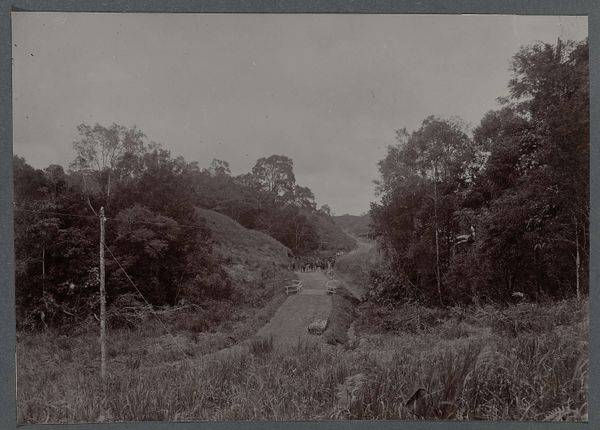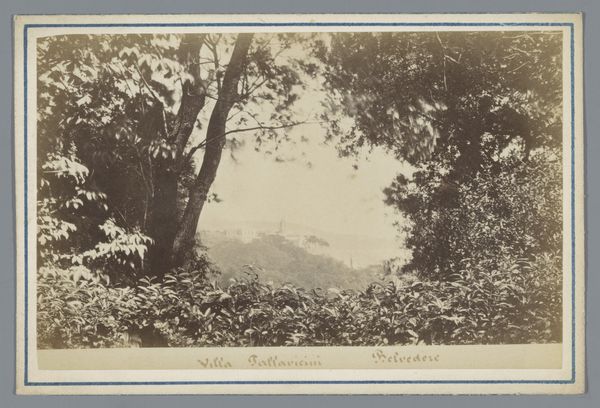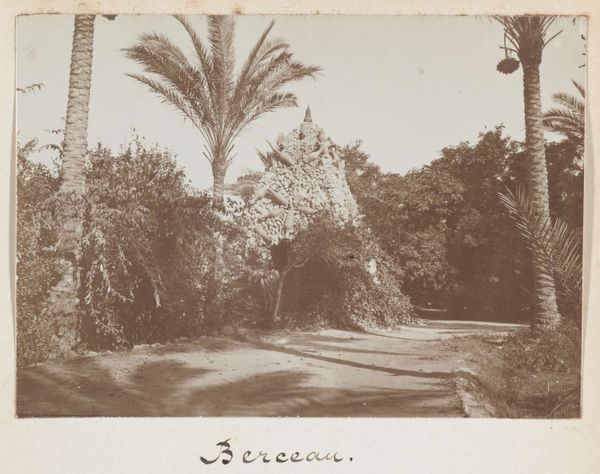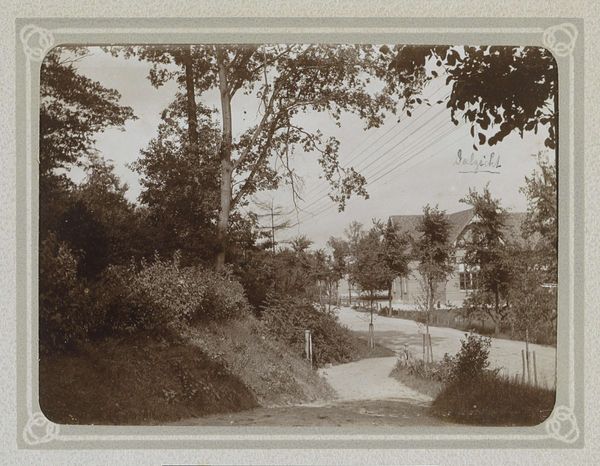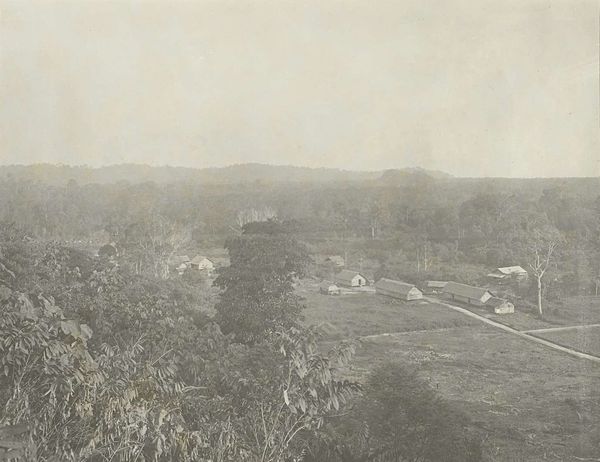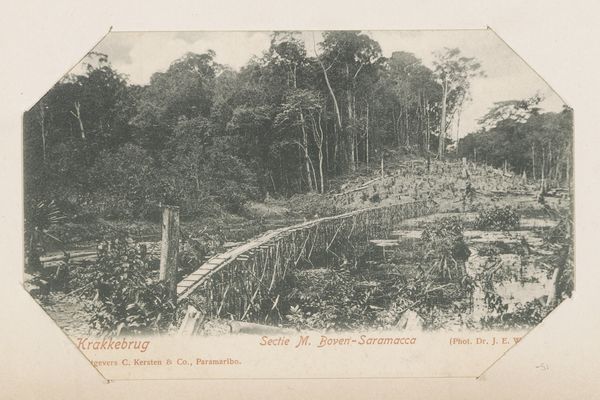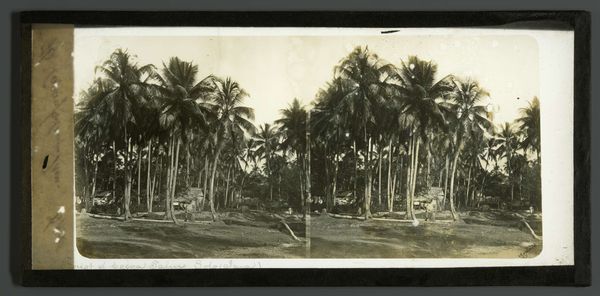
photography
#
pictorialism
#
landscape
#
street-photography
#
photography
Dimensions: height 81 mm, width 113 mm
Copyright: Rijks Museum: Open Domain
Curator: Here we have Hendrik Doijer’s “Brownsweg verlaat de Patricksavanna,” taken sometime between 1903 and 1910. It's a striking photograph done in the pictorialist style. Editor: Striking is one word for it. I find the tones incredibly muted. There’s a definite feeling of humid stillness evoked. The composition is interesting with that path leading the eye, but… overall, rather melancholic. Curator: It's an example of pictorialism, emphasizing atmospheric effects achieved through careful tonal manipulation in the darkroom, something Doijer skillfully captures. Observe how the strategic blurring creates depth, pushing back layers into hazy obscurity. The texture of the vegetation contrasts with the softness of the sky. Editor: Right, but thinking about Doijer and the photographic materials… what kind of paper was used, what chemicals developed the image? This tonal range screams process, and I am curious about the potential impact of those factors here. Also, how does that path signify access and perhaps exploitation of these lands during the early 20th century? I see not just formal choices, but a record of material interactions. Curator: It does open into various interpretive possibilities. Notice the composition; the placement of the solitary tree in the middle-ground, and the carefully constructed receding planes that draws you in despite the hazy effects. This photograph’s aesthetic arrangement reflects ideas of nature and representation. Editor: Perhaps, but let's not disregard what went into its creation. The exploitation involved in sourcing photographic materials during this era alone… Moreover, images like this shaped perceptions and bolstered colonial endeavors, defining our connection to places. How do we look past what feels beautiful to appreciate the circumstances surrounding the making? Curator: Perhaps that beauty is what makes us stop and ask these harder questions. The composition directs us inward—offering not just a pretty landscape, but space for contemplation about history, vision, and how we frame ideas around the exotic or unknown. Editor: Precisely, framing it in terms of extraction and exploitation brings awareness that aesthetic considerations often distract viewers. What at first felt still might be the effect of exploited labor. Curator: Indeed, it reveals how seemingly serene vistas hide very intricate ties to both art and labor practices. Editor: So a work made with care but charged with significance beyond the aesthetics of a tranquil landscape.
Comments
No comments
Be the first to comment and join the conversation on the ultimate creative platform.
